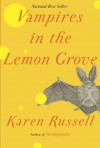Currently reading
Pilgrim at Tinker Creek
Vampires in the Lemon Grove: Stories
The First Fifteen Lives of Harry August
Moral Tribes: Emotion, Reason, and the Gap Between Us and Them
The Wisdom Of The Myths: How Greek Mythology Can Change Your Life
The Science of Yoga: The Risks and the Rewards
 I can understand why this was such a controversial book. I appreciated the more scientific approach to understanding the practice of yoga. I did not appreciate Broad's journalistic style (distracting obsession with who, what, when, where; taking a publication's view for a community's view; forcing the angle of self-interest and sensational "headlines").
I can understand why this was such a controversial book. I appreciated the more scientific approach to understanding the practice of yoga. I did not appreciate Broad's journalistic style (distracting obsession with who, what, when, where; taking a publication's view for a community's view; forcing the angle of self-interest and sensational "headlines").I admire the author's intention to integrate modern medical science and yoga to bring maximum healing potential to those in need. I'll give him the benefit of the doubt (though he didn't give that benefit to to the yoga institutions and teachers he criticized) that his reporter's skill in getting readers stirred up and making controversial headline claims, was to help spread the word about how to make yoga's healing benefits safer and more accessible to all, and not just sensationalizing to sell a lot of books for personal gain.
For the yoga enthusiast like me there were some interesting historical perspectives on how the practice I know came to be. I also confirmed and even learned some about the physiological and psychological effects of yoga. Yoga is certainly not the only field in which practitioners fail to distinguish advice based on experiences vs. scientifically tested best practice (ie., my teacher found that headstand relieved her sinus congestion, ergo headstand relieves sinus congestion; or four of my students found that shoulder stand helps insomnia, so shoulder stand helps insomnia). But yoga is a field in which we very frequently accept such advice and conclusions as though they were scientifically valid. An odd oversight in an era when we are fully able to conduct scientific tests and draw valid and useful conclusions about what helps and what does not.
I was never convinced that Broad truly understood the universal connection between spirituality and gender roles, and found his personal assessment of the role of sex in yoga overstated. The injury issues he mentioned came largely from practices that have been modified for safety in any studio I've ever entered.
And although I took offense at the suggestion that teachers claim their RYT status certifies them as therapists (no ethical RYT teacher would make such a claim), I do understand what he means about the interesting moment the practice of yoga has reached. Its lack of a single governing body, rigorous universal certification standards, and ability to mean completely different things to different people, has drawbacks (which Broad outlines in detail) but also pluses, such as flexibility and diversity.
I ended the book very excited about the evolving future of yoga.







